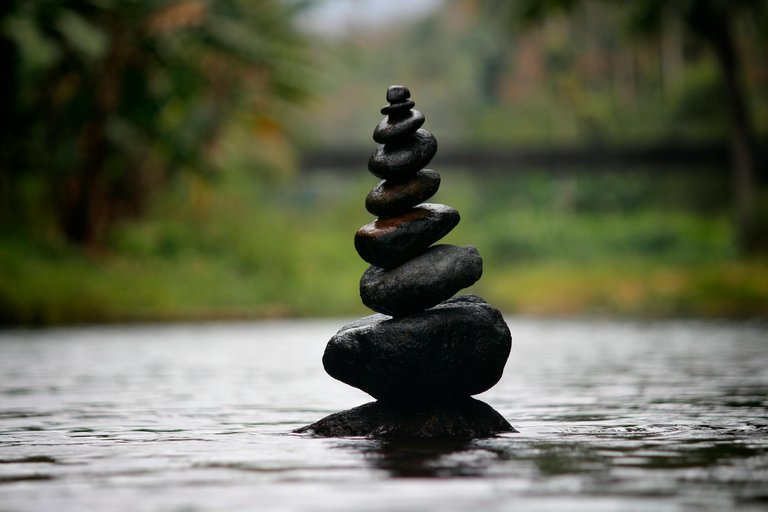In today’s fast-paced society, where people juggle demanding jobs, personal responsibilities, and endless social commitments, the concept of finding inner peace can feel elusive. Many individuals yearn for a calm mind and balanced life, yet the pressures of modern existence seem to pull us further away from serenity. So, how do we find inner peace amidst all the chaos?
Before we embark on our journey to find peace, it’s essential to understand what inner peace truly means. Inner peace is not just the absence of external conflicts; it’s a state of mental and emotional calm, where our worries and fears do not overwhelm us. It’s the ability to remain centered and balanced, no matter what life throws our way.
For some, inner peace may involve a sense of purpose or alignment with their values. For others, it may come from regular practices that foster mindfulness and resilience. Finding peace is deeply personal, as it reflects what feels meaningful and fulfilling to each of us.
Mindfulness is a tool that helps us remain present, regardless of the surrounding turmoil. This ancient practice has been shown to improve emotional regulation, reduce anxiety, and cultivate greater self-awareness.
One way to practice mindfulness is through mindful breathing. When life feels overwhelming, take a few moments to focus solely on your breath. Close your eyes, inhale deeply, and let your breath flow naturally. By bringing awareness to each inhale and exhale, you can create a moment of calm within, even amidst a hectic environment.
Another approach is practicing mindful observation. Try to observe your surroundings or inner thoughts without judgment. Notice what you see, hear, or feel without attaching a story to it. This simple exercise helps create a pause in the flow of habitual thinking, allowing you to return to a state of calm.
Many of us seek control as a way to feel secure, but the desire to control every aspect of our lives can lead to frustration and stress. Accepting that some things are beyond our control is crucial to achieving peace.
Imagine holding a handful of sand. If you squeeze too tightly, the sand slips through your fingers; if you hold it gently, it stays. Life can be much the same way. When we loosen our grip and allow things to flow, we reduce anxiety and open ourselves to new possibilities.
Letting go doesn’t mean passivity; rather, it’s about acknowledging that not everything can be managed. By focusing on what we can control—our reactions, attitudes, and actions—we empower ourselves to face life’s unpredictability with greater resilience.
In a hyper-connected world, solitude can sometimes feel unnatural. However, spending time alone can be a powerful way to reconnect with ourselves and recharge. Solitude allows us to reflect without outside influence, fostering personal growth and self-acceptance.
Consider dedicating a few minutes each day to being alone with your thoughts. Whether it’s a walk in the park, sitting quietly at home, or enjoying a coffee alone, time spent in solitude can offer valuable insights into our desires and goals. By embracing solitude, we cultivate a deeper understanding of our own needs, which in turn nurtures inner peace.
Gratitude shifts our focus from what we lack to what we have, fostering a sense of abundance rather than scarcity. Practicing gratitude has been linked to increased happiness, better physical health, and stronger relationships.
To incorporate gratitude into your routine, start by listing three things you’re grateful for each day. These don’t have to be grand events; small joys like a warm cup of tea, a beautiful sunset, or a kind word from a friend can make a difference. By focusing on what we’re thankful for, we train our minds to look for the positive aspects of life, creating a foundation for lasting peace.
Inner peace is also cultivated through setting healthy boundaries with people, commitments, and situations that drain us. Many individuals struggle with saying “no” due to fear of disappointing others or missing out. However, establishing boundaries is essential for our well-being.
When setting boundaries, remember that they are a form of self-respect. Start by identifying what feels acceptable and comfortable for you. Whether it’s limiting time on social media, saying no to extra responsibilities, or carving out time for self-care, healthy boundaries help protect your energy and create a more peaceful life.
A significant component of inner peace is feeling a sense of purpose. When we engage in activities that align with our values, we often feel more fulfilled and resilient in the face of challenges.
Finding purpose doesn’t always mean a life-altering mission; it can be as simple as contributing to your community, helping a friend, or pursuing a creative passion. Ask yourself what brings you joy and fulfillment, and try to integrate those activities into your daily life. Purpose-driven actions create a sense of satisfaction that fosters a peaceful and meaningful existence.
Change is the only constant in life, yet it’s something that many of us resist. Embracing change as a natural part of life can bring us peace by helping us let go of attachments and expectations.
Reflect on how you’ve grown and adapted to changes in the past. Recognize that, while change can be difficult, it often brings valuable experiences and lessons. By accepting the impermanence of things, we cultivate a state of peace that is not dependent on circumstances, allowing us to remain calm through life’s ups and downs.
Remember, inner peace doesn’t mean an absence of challenges but rather the ability to remain grounded despite them. By making small, intentional choices each day, you can nurture a state of calm and balance, even in a chaotic world. Start with one or two practices that resonate with you, and gradually build a lifestyle that supports your journey toward true tranquility.
